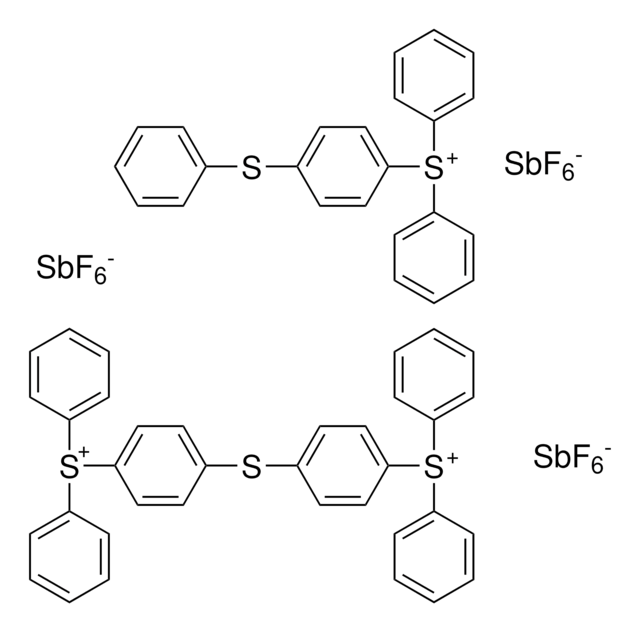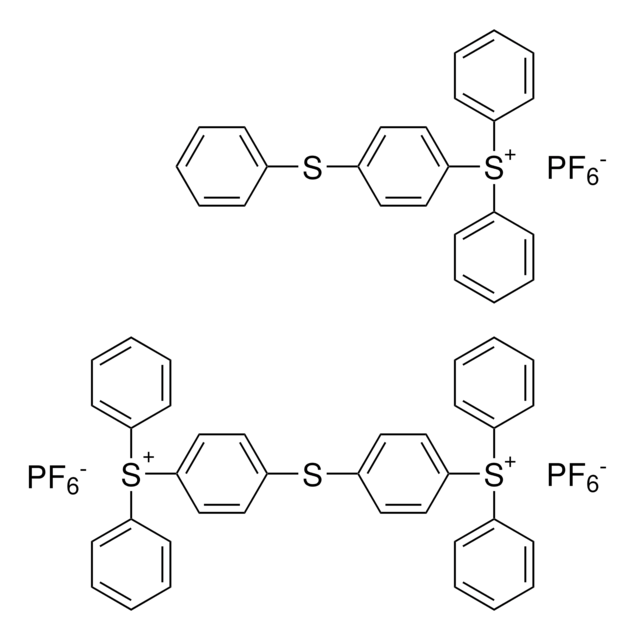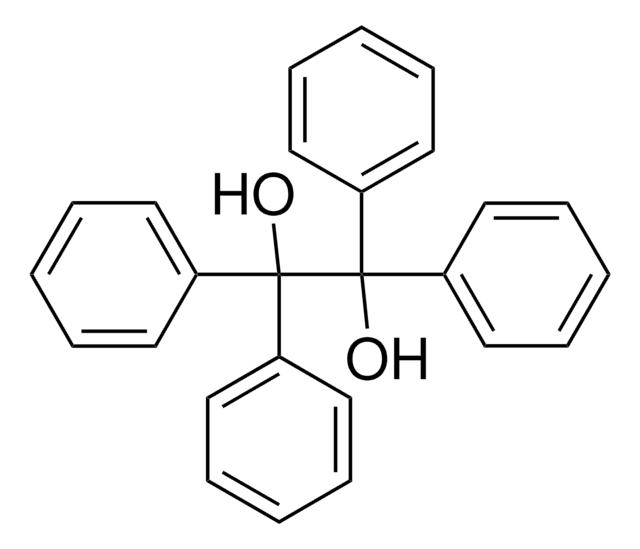所有图片(1)
About This Item
经验公式(希尔记法):
C14H20O4
CAS号:
分子量:
252.31
MDL號碼:
分類程式碼代碼:
12162002
PubChem物質ID:
NACRES:
NA.23
推荐产品
形狀
viscous liquid
折射率
n20/D 1.498 (lit.)
mp
−37 °C (lit.)
密度
1.17 g/mL at 25 °C (lit.)
SMILES 字串
O=C(OCC1CCC2OC2C1)C3CCC4OC4C3
InChI
1S/C14H20O4/c15-14(9-2-4-11-13(6-9)18-11)16-7-8-1-3-10-12(5-8)17-10/h8-13H,1-7H2
InChI 密鑰
YXALYBMHAYZKAP-UHFFFAOYSA-N
一般說明
3,4-环氧环己基甲基3,4-环氧环己烷羧酸酯(EEC)属于脂环族环氧树脂类化合物。通常用作涂料、粘合剂和复合材料等环氧树脂基材料配方中的反应性稀释剂或交联剂。
可由3′-环己烯基甲基3-环己烯羧酸酯与过氧乙酸反应合成。它的脂族主链和分子结构能够提供许多有用的特性,例如热稳定性、耐气候性和导电性。
可由3′-环己烯基甲基3-环己烯羧酸酯与过氧乙酸反应合成。它的脂族主链和分子结构能够提供许多有用的特性,例如热稳定性、耐气候性和导电性。
應用
3,4-环氧环己基甲基3,4-环氧环己烷羧酸酯可用作:
- 反应性稀释剂或交联剂,制备应用于电气、纺织、电子和运输的阻燃环氧树脂复合材料。
- 单体,合成可用于控释系统、药物输送或传感器的高分子凝胶。
訊號詞
Warning
危險聲明
危險分類
Aquatic Chronic 3 - Skin Sens. 1
儲存類別代碼
10 - Combustible liquids
水污染物質分類(WGK)
WGK 3
閃點(°F)
244.4 °F - closed cup
閃點(°C)
118 °C - closed cup
其他客户在看
Hua Jin et al.
Structure (London, England : 1993), 27(10), 1508-1516 (2019-08-06)
Cyanobacteria are the most abundant photosynthetic microorganisms, the global distribution of which is mainly regulated by the corresponding cyanophages. A systematic screening of water samples in the Lake Chaohu enabled us to isolate a freshwater siphocyanophage that infects Microcystis wesenbergii
Synthesis and application of epoxy resins: A review
Jin F, et al.
Journal of Industrial and Engineering Chemistry, 29(25), 1-11 (2015)
In situ synthesis of silver- epoxy nanocomposites by photoinduced electron transfer and cationic polymerization processes
Sangermano M, et al.
Macromolecules, 40(25), 8827-8829 (2007)
Investigation of curing kinetics of various cycloaliphatic epoxy resins using dynamic thermal analysis
Yoo MJm et al.
European Polymer Journal, 46(5), 1158-1162 (2010)
J J Schwartz et al.
Nature communications, 10(1), 791-791 (2019-02-17)
Production of objects with varied mechanical properties is challenging for current manufacturing methods. Additive manufacturing could make these multimaterial objects possible, but methods able to achieve multimaterial control along all three axes of printing are limited. Here we report a
我们的科学家团队拥有各种研究领域经验,包括生命科学、材料科学、化学合成、色谱、分析及许多其他领域.
联系技术服务部门









